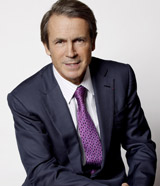 Key concepts: disruptive innovation, leapfrogging, processes, corporate culture, project management
Key concepts: disruptive innovation, leapfrogging, processes, corporate culture, project management
Companies and industries studied: Apple, Nucor, Dell, Toyota, GM, GE, Ford, Compaq, HP, IBM, disk drive industry
It is said that this was Steve Job’s favourite book and had a lot of influence on the way he ran Apple. It focuses on disruptive technology and shows why a lot of companies miss out on innovation in markets and why leaders are often ‘leapfrogged’ by challengers. Among some of the surprising theories Christensen states that companies should NOT always listen to their customers (Steve Jobs declared this many times over; so did Henry Ford). Also, it may be better for a company to invest in lower margin products rather than high margin ones.

The first part concentrates on the disk drive industry and is quite technical (going into details about the relative sizes and technical abilities of the drive). There are then further details about the mechanical excavator industry. This can be quite arduous to read. If you are short of time, go straight to the Conclusion of the book and then read Book Group Guide at the end. Both of these chapters give an excellent summary of the main ideas with some further questions for discussion.One particularly important part of the book is Chapter 8 and the Organizational Capabilities Framework which sets out Resources, Processes & Values as being the key for companies to change when technology or consumer tastes develop. It also highlights the importance of middle management in the implementation of strategic change.Christensen even gives a recipe for creating a successful and profitable electric car, though no car manufacturer seems to have taken him up on this as of yet.
Some interesting quotes:
“Blindly following the maxim that good managers should keep close to their customers can sometimes be a fatal mistake.”“….managing innovation mirrors the resource allocation process. One major reason for the difficulty of managing innovation is the complexity of managing the resource allocation process.”

One major reason for the difficulty of managing innovation is the complexity of managing the resource allocation process
“As companies grow from a few employees to hundreds and thousands, the challenge of getting all employees to agree on what needs to be done, and how it should be done so that the right jobs are done repeatedly and consistently can be daunting for even the best managers. Culture is a powerful management tool in these situations.”
Through the 1970s and 1980s Toyota upended the world automobile industry through its innovation in development, manufacturing, and supply-chain processes– without investing aggressively in resources. General Motors responded by investing nearly $60 billion in manufacturing resources.
“Processes are very hard to change- for two reasons. The first is that organizational boundaries are often drawn to facilitate the operation of present processes. In some cases mangers don’t want to throw the existing processes out.”

Click to access more AMP books.
“Because values are the criteria by which prioritization decisions are made, projects that are inconsistent with a company’s mainstream values will naturally be accorded lowest priority.”
Dell Computer began by selling computers over the telephone. For Dell the initiative to begin selling and accepting orders over the internet was a sustaining innovation. It helped it make more money in the way it was already structured. For Compaq, Hewlett- Packard, and IBM, however, marketing direct to customers over the internet would have a powerfully disruptive impact.

For Dell the initiative to begin selling and accepting orders over the internet was a sustaining innovation
Performance oversupply is an important factor driving the transition from one phase of the cycle to the next.
The buying hierarchy has four phases: functionality, reliability, convenience, and price.
The reason disruptive technologies and new distribution channels frequently go hand-in-hand is, in fact, an economic one. Retailers and distributors tend to have very clear formulas for making money.”
Business School Grenoble EM International Affairs Higher Education ESC Grenoble Strategy Blog Global Ed Graduate Business School Mark Thomas
See also:
Other Book Reviews
The Innovator’s Dilemma
Darden School of Business Blog: “Dr. Christensen provides a framework for managers to recognize disruptive technologies and he performs a case study of electric car technology to communicate how managers should react to the dual threat and opportunity presented by disruptive technologies. “
The Innovator’s Dilemma: A book review by Bob Morris
First Friday Book Synopsis: “Having just re-read this “business classic,” I admire it even more now than I did when it was first published. In his Introduction, Christensen makes his objective crystal clear: “This book is about the failure of companies to remain competitive when they confront certain types of market and technological change.”
The Innovator’s Dilemma: When New Technologies Cause Great Firms to Fail
Electrifying Times: “I find many books about business boring, poorly written, and unoriginal. Most have little applicability to revolutionary discoveries like cold fusion. This is an exception.”
Mark Thomas
Grenoble EM
ESC Grenoble
GGSB
Strategy
Blog
Global Ed
hool




















Pingback: BOOK REVIEW: “Inside Coca Cola” by Neville Isdell with David Beasley | GlobalEd
Pingback: BOOK REVIEW: “Steve Jobs” by Walter Isaacson | GlobalEd
Pingback: BOOK REVIEW “Competitive Strategy” by Michael Porter | GlobalEd
Pingback: BOOK REVIEW: “What is Strategy – and does it matter?” by Richard Whittington | GlobalEd
Pingback: BOOK REVIEW: “The Fifth Discipline: The Art and Practice of the Learning Organization” by Peter M. Senge | GlobalEd
Pingback: BOOK REVIEW: “Borderless Economics” by Robert Guest | GlobalEd
Pingback: BOOK REVIEW: “Onward: How Starbucks Fought for Its Life without Losing Its Soul” by Howard Schultz & Joanne Gordon | GlobalEd
Pingback: BOOK REVIEW: “Strategy Rules: Five Timeless Lessons from Bill Gates, Andy Grove, and Steve Jobs” by David B. Yoffie & Michael A. Cusumano (2015) | GlobalEd